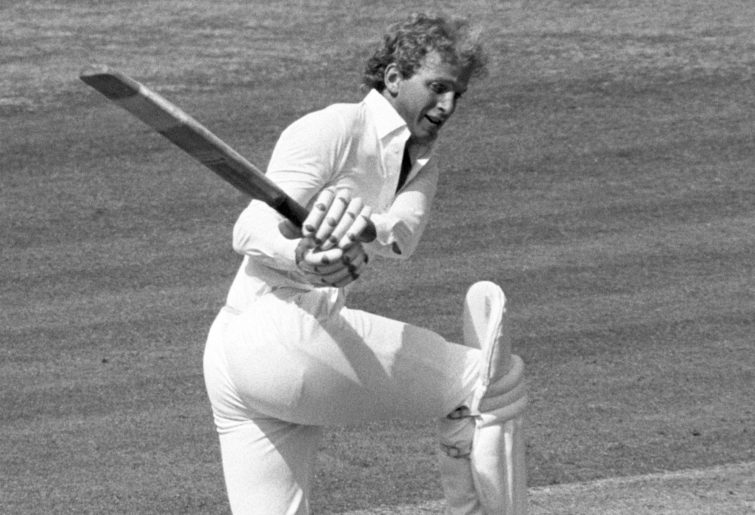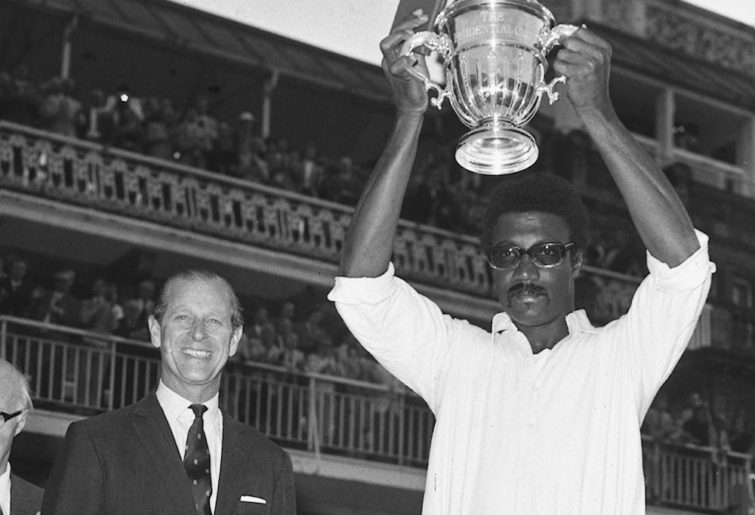Bairstow goes ballistic, clubs 45-ball ton to spearhead highest T20 run chase EVER
Johnny Bairstow has hit his way back into form with a 45-ball century as he steered his side to a record-breaking win, easily chasing…
Opinion
It was Thursday, June 9, 1983. Here in Dhaka, it was a fine summer day.
It was bright and sunny. In fact, when you are 14, every day seems bright and sunny.
In the morning I went to school. After carefully handling the googlies and the flippers thrown in by our geography teacher, I successfully completed my half-yearly examination for Grade 9. I returned home to start a five-week-long vacation for Ramadan and Eid.
Over in the UK, it was a big day for politics, as the people voted to give the Iron Lady Margaret Thatcher her second term in office. It was also an important day for cricket lovers throughout the world as the third World Cup started in England and Wales.
It was the last World Cup in the 60-over format. All the eight teams were in action at four different venues.
Although three of the matches started at 9:45am British time, there was rain at Old Trafford. The BBC commentary became available to South Asian listeners 15 minutes late – that’s 4pm here in Dhaka. Commentary shifted from one venue to another, but the main focus was on the Oval match between the hosts and New Zealand.
The first thing I learnt was that England were batting and opener Graeme Fowler was already dismissed. So David Gower was at the wicket with Chris Tavare. Yes, the Kent batsman played 29 ODIs for England. Why and how, I don’t know. His ODI strike rate was 48.94. Even Geoffrey Boycott’s strike rate was better: 53.56.
Here Tavare batted in his own way, scoring 45 from 91 balls. Gower at the other end was more adventurous, scoring 39 from 62 balls.

(Photo by PA Images via Getty Images)
Still, the Kiwis had things under control until lunch time, thanks mainly to the usual miserly bowling by Sir Richard Hadlee.
It was after lunch that the English middle order really cut loose. Allan Lamb scored a fine 102. Ian Botham made a quick-fire 22 from 16, but it was Graham Dilley who provided the most entertaining batting of the day. His 14-ball 31 took the score to 6-322.
More than 200 runs came in the last 25 overs. Martin Snedden became the first bowler to complete a hundred in ODI cricket. He took 2-105 from his 12 overs. In contrast, Hadlee’s figures were 12-4-26-1.
NZ were never in the hunt and they finished 216 all out despite a fine 97 from Martin Crowe. Their poor batting display here would hurt them greatly in the ultimate count. They would lose out on a semi-final berth to Pakistan in a very close run rate count. I must remind everyone that in those days just the run rate was counted. The net run rate thing came only in 1992.
In the other Group A match in Swansea, Pakistan completed a comfortable 50-run victory over Sri Lanka. Despite the comfortable margin of victory, the bowling looked rather ordinary. Imran Khan, the skipper, was unable to bowl and only played as a batsman.
Interestingly, Abdul Qaidr was in the reserves for this match. He would make his ODI debut in the next group match against NZ, taking 4-21 from 12 overs.

(S&G/PA Images via Getty Images)
While the two Group A fixtures went pretty much according to expectations, the two Group B matches provided greater excitement and a couple of upsets.
At Trent Bridge, Australia put Zimbabwe in after winning the toss. Many people, including me, were surprised when their opening pair put on a 50-run partnership. However, Dennis Lillee, coming in as a first-change bowler, dismissed the openers. And when they slumped to 5-94 before lunch, things looked normal again.
It was after lunch that the Zimbabwe captain Duncan Fletcher led the recovery. His unbeaten 69 from 84 balls eventually became the match-winning innings. First he put on 70 with Kevin Curran – father of Tom and Sam. Then another all-rounder Iain Butchart added a quick-fire 34 from 38 balls as the Africans finished on 6-239.
In the morning, Rodney Hogg and Geoff Lawson had opened the bowling for the Aussies. In the afternoon, Vincent Hogg and Peter Rawson opened the bowling for Zimbabwe. The Australian openers looked comfortable, but it was again Fletcher who changed the situation.
Coming in to the bowling crease as the fourth bowler, he took 4-42 to complete a superb all-round performance. At the other end, Egyptian-born off-spinner John Traicos, playing his first full international match for over a decade, had the Aussie batsmen tied to the crease.
As for Australia, Kepler Wessels’ 76 from 130 balls didn’t do much good to his team’s cause. At the end, Rod Marsh smashed 50 from 42 balls, but it went in vain. Astonishingly, the Australian top order had six lefties in their top seven. Kim Hughes was the only right-hander, and he lasted for only four balls, scoring a duck.
Rain delayed the start of the other match of the day in Manchester and it eventually became a two-day affair. When play did resume, Clive Lloyd, the Windies captain, decided to field first. When India reached 5-141 it seemed that Lloyd’s decision was paying off.

West Indies legend Clive Lloyd was a World Cup veteran. (Photo by PA Images via Getty Images)
But middle-order batsman Yashpal Sharma held the batting together, scoring a career-best 89. Punjab-born Sharma was a solid right-hander known more for his defensive shots rather than his attacking strokes. But he was a fine player of short-pitched bowling, and in those days the West Indies pace battery would bowl plenty of short stuff, even in ODIs.
Back in 1979, in Calcutta, Sharma had played a memorable knock of 85 not out against Geoff Dymock and Rodney Hogg on the final day that very nearly won the match for India.
Back to Old Trafford, Sharma got good support from the all-rounders Roger Binny and Madan Lal as India finished at a very respectable score of 8-262.
When they batted, the West Indies top order looked rather carefree and they paid the penalty. All the top five reached double figures but among them Lloyd’s 25 was the highest score. Binny got his out-swingers going perfectly, and along with left-arm spinner Ravi Shastri, he ran through the middle order.
The match was over when the West Indies reached 8-130, and only a late rally by the fast bowlers took the score to 228 all out. It was the Windes’ first ever loss in World Cup cricket. For India, it was only their second win at the tournament. In fact, their only previous success was against East and Central Africa in 1975.
Roger Binny produced a fine all-round show, but Yashpal Sharma was adjudged the man of the match.